I like to fish a Royal Wulff. Big ones. No, I'm serious, don't laugh. Well, maybe you're not, but I can't tell you how often I've been mocked for doing so. If I'm prospecting riffles, having a tough day figuring out what I the fish are taking, or generally don't have another idea in mind, I'll often tie on this time proven pattern and go to work. I know plenty of other anglers who don't even carry this pattern and most certainly wouldn't be caught fishing it. The reasons always seem to be the same: it is old fashioned, non-specific (though what attractor patterns aren't) or -- more often -- it is taken as a sign of a lack of penchant for proper study and deduction on the stream. Oh, and it's not very cool.

As far as I'm concerned, this is all nonsense. Like many other fly patterns which have fallen out of favor with time, the Royal Wulff has -- in my opinion -- simply fallen victim to being unexciting. So many anglers are busy looking for the hot, new, trendy pattern that they've abandoned patterns that have survived for over a hundred years, presumably laboring under the delusion that fly tiers of the entire 20th century and before were completely devoid of imagination and forced to do little more than tie the same few dozen patterns over and over again.
Me? I'm interested in what works, and recognize that these patterns survived for so long because they do. As such, I'll often make it a point to carry these classic and sometimes rarely used patterns, laboring under my own delusion that the fish in the stream I'm stalking never see these flies anymore.
As I was pondering this thought recently, I stumbled upon this post (link now defunct) by Michael Gracie, in which he recounts his 10 greatest days on the water and the flies that made those days what they were. Given what you've read here thus far, you likely won't be surprised to learn that they were all classic, run-of-the-mill patterns, but you might have been if I hadn't set the stage before mentioning Michael's post.
Truth be told, most of the patterns in Michael's list are patterns that have stood the test of time well enough to still have a home in most anglers' boxes, but none of them are the latest and greatest fly of the day.








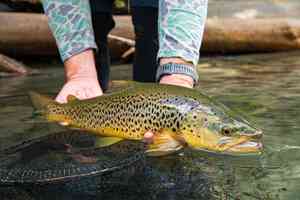





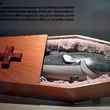



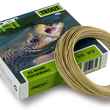




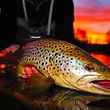
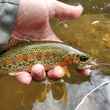



Comments
Todd Tanner replied on Permalink
Interesting. I fish a Royal Wulff every once in a while. It's an excellent pattern that works really well in pocket water and riffles.
One of the sweetest flies I own is a perfectly tied, perfectly proportioned Royal Wulff. It was a gift from my brother-in-law Pat, and it's a size 28. I have no idea how he tied it, but it's gorgeous.
As for the Wulff not being cool - that's just messed up. Sure, poorly tied Wulffs can be downright ugly, but tied correctly, they're beautiful and effective. What's not to like?
Chad Shmukler replied on Permalink
I can't even imagine a size 28 Wulff, let alone one that isn't a mess That's fantastic.
There's nothing not to like, as far as I'm concerned. Which is why I don't know why you don't see flies like the Wulff, the Humpy, etc in more boxes.
When was the last time you saw the size 12 Royal Wulff bin empty at the fly shop? Maybe that's asking a bit much, but you get the idea ...
Todd Tanner replied on Permalink
I do think there's a bit of an eastern vs. western bias. Even though the Wulff series has eastern roots, it's far more accepted in the west, where it's still a go-to searching pattern for a lot of experienced anglers.
I also have to chuckle at the idea that some folks would look down on a Wulff. Tied correctly - just a touch sparse - they're gorgeous flies that require real artistry at the vice.
Chad Shmukler replied on Permalink
You know, I was going to note the likely greater acceptance in the west in my last reply, due simply to the more prominent use of attractor dries, but chose not to generalize since I don't live there. Glad to hear you echo my thoughts, though.
My perspective is most certainly an eastern one, where many folks judge an angler's prowess solely on his/her ability to precisely match the hatch and where it isn't uncommon to go into a fly shop at the end of the day and be told that the reason you hadn't been catching fish for the last 2 days was because even though you picked up the hot new CDC version of the size 22 emerger everyone wants, the ones you were fishing had a brown shuck instead of a tan one.
While there's no doubt that this might actually be true on certain occassions, my guess is that 99% of the time it is pure hogwash, and that there is a laundry list of more likely explanations for lack of success.
Aileen Lane replied on Permalink
Great pattern! I love those classics! I have tied them, but not fished them yet. That will have to change. =)
Eunan replied on Permalink
I too tie classic flies, though the more the wet and salmon variety, than dry flies. But I have been known to tie married quill wing dries!
There's no disputing the aesthetic beauty of a well tied classic, and frankly, most are not exceptionally difficult to tie. Yet, most tyers seem to shy away either because of the 'difficult' or 'expensive' perception.
As you said, they're classic for a reason - they've stood the test of time and still catch fish!
Great post!
Eunan
Lance replied on Permalink
if i were a trout in a riffle or pool i would eat the crap out of a royal wulff. eat it stupid.
Marc replied on Permalink
I probably shouldn't be saying this, but I use this pattern here in the west ALL the time. Drop a tungsten bead head whatever behind it and it's...................deadly!
Michele Chase replied on Permalink
Classics rule, in my humble opinion! Almost all the fish I've netted, that were over 20 inches, were with a larger royal coachman. Smaller white gnats and (don't laugh) medium size, green Hornbergs are my other "go to" flies. Pale evening Dunns are next in line, when all else is rejected, when fishing dries. I'm willing to get laughed at, while I'm netting lunkers and the boys are repeatedly changing out their offerings!
Pages